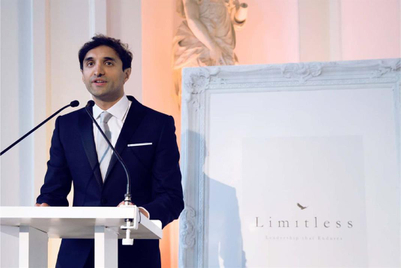
Editor's note: This article is part of a series revolving around the concept of brands as intersections.
Whoever decided that the job should be called ‘brand manager’ has a lot to answer for.
It perpetuates the idea of a direct relationship between a brand and the company that seeks to control it, as if you can calibrate its every nuance, directing its every move. ‘Positioning’ doesn’t help either—conjuring up images of pieces being shuffled around on tactical maps in some fusty operations room, as if you can just move a brand out of one territory and into another like a corporation-sized game of risk.
Brand Positionings, as a set of values in a presentation, a manifesto on a page, or layers of an onion are a key part of our trade. These models give us a common language to understand what we want a product or business to mean, as well as a way to communicate these aspirations to our partners, both agencies and other brands. But what is important to remember is that they are just that—models. They're a way of explaining and describing a thing, but not the thing itself.
We must see brands as intersections that encompass cultural, geographical, commercial and narrative elements in their breadth. Brands are not ‘owned’, ‘managed’ or ‘positioned’ by the companies that gave birth to them. They exist as a negotiated space, a conversation between the company, product or service and the consumer and their cultural context.
The idea of brands as a psychological and social crossroads, as shared liminal spaces, may fill many brand stewards with dread, but in reality, they have always been a joint undertaking by the companies that produce and the people that consume, whether we have been aware of it or not. Simply put, a brand is what people think and feel about a product, rather than what they are told they ought to think and feel. All of our outputs are simply inputs to this thing that we call a ‘brand’.
The intersections metaphor is apt here. Influences come from multiple directions, like vehicles speeding toward a neural junction. Product experience, other people’s opinions, packaging, cultural associations, socio-historical context and the artifacts that a brand manager may put into the mix (the brand’s communications) all combine to affect what a brand is. A newly launched challenger may have lighter traffic on its roads, but it’s never a one-way-street. The relatively recent proliferation of two-way channels has made this more apparent, but we must remember brands have been ‘social’ long before ‘social media’.
What this means is that a positioning is an evolving set of ideas, a conversation, and that brand ‘values’ or ‘essence’ are at once both true and also questionable; valid hypotheses rather than proved theorems. It means what we capture on a page or in a PowerPoint is a snapshot of something bigger, markers put down at a rough median between marketing aspiration and consumer reality, with the distance between those two poles roughly reflecting how successfully that brand is doing ‘in the wild’.
If this all sounds a little bit hopeless, it’s not meant to. Acknowledging this has a profound influence on how we think about brands. Firstly, it means brands are far more powerful than ‘positioning’ or ‘management’ gives them credit for. They are forces of nature that have powerful connections with people and exert their influence in culture. Now that has to be more exciting than words on a page.
As ‘brand influencers,’ we get to play a kind of ‘cultural judo’ with them, deftly using their weight and momentum to shape those negotiated spaces. It also means brand influencers shouldn’t try and ‘fight’ or deny them. A ‘repositioning’ that denies a brand’s long heritage or scale is destined to fail through dissonance as one vehicle comes hurtling head-on into the juggernaut of history, habit or culture. Acting and thinking like a challenger brand is powerful for a big company, but to deny ones own baggage and nature will almost always fail.
So why is this so important now? Where previously we sent the marketing mix into this negotiated space and waited hopefully to see second-order results through sales and share, the mass proliferation of digital and social has allowed us to close the loop. People have always been involved in this dialectic, but now they can be heard. This increases the appetite for brands that are ‘open’, where they can see their own inputs and influence played back. This means that the ‘positioning’ is a start point and a wish-list rather than the end-goal. Rather than feeling like a tightly defined, reductive ‘thing’, we need to aspire to shape brands that have clarity, but at the same time have texture and layers within that clarity, elements clustered round an agreed shared space and meaning. Rather than everything needing exactly the same voice, it now just needs to feel that it is in the same register. This is hugely liberating for brand influencers, it gives us freedom to try new things, to stretch brands at the margins and play at the periphery, as well as offering alternative viewpoints on their core. This means not only engaging in discussion with consumers, but also between different elements of the media plan. Encourage conversation, in the broadest sense, rather than put up a roadblock’; have your brand ask questions rather than answer them.
Or we can continue to try and simply ‘manage’. But ultimately this liminal space will continue to be negotiated and renegotiated whether we are there or not.
Adam Nelson is an associate director at Flamingo


.jpg&h=334&w=500&q=100&v=20250320&c=1)

.jpg&h=334&w=500&q=100&v=20250320&c=1)

.jpg&h=334&w=500&q=100&v=20250320&c=1)

.jpeg&h=334&w=500&q=100&v=20250320&c=1)


.jpg&h=334&w=500&q=100&v=20250320&c=1)
+1.jpg&h=268&w=401&q=100&v=20250320&c=1)






.jpg&h=268&w=401&q=100&v=20250320&c=1)